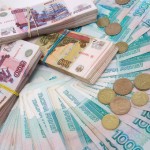The euro was gaining ground against the British pound on trading Monday, despite the annualized harmonized index of consumer prices (HICP) in the Euro zone came in below forecasts during February.
EUR/GBP touched a session high at 0.8368 at 12:20 GMT, after which consolidation followed at 0.8364, gaining 0.09% for the day. Support was likely to be found at March 14th low, 0.8336, while resistance was to be encountered at March 14th high, 0.8380. Last week the pair appreciated 0.66%.
The annualized rate of consumer inflation in the single currency zone was reported to have weakened in February, which may put pressure on the European Central Bank to introduce new measures in order to spur economic growth. The annualized HICP came in at 0.7% last month, a level last seen during October 2013, which was still far below central bank’s inflation objective of 2%, that provides price stability. Experts had anticipated that the annual inflation rate will remain steady at 0.8% in February.
In November the ECB cut its benchmark rate by 0.25% to the all-time low level of 0.25%, following data by Eurostat, which revealed October’s rate of inflation in the Euro region slowed down to 0.7%.
Meanwhile, in the United Kingdom, home values rose to new record high levels during March, with buyers still outnumbering sellers, while the lack of supply of new homes for sale will probably continue to push prices up in the coming months. According to data by the Rightmove online agency, ask prices of homes in the country climbed 1.6% (4 000 GBP) to reach the record 255 962 GBP in March compared to February. This followed another 3.3% gain in February compared to January. In annual terms, home values rose 6.8% (16 000 GBP) during March.
Government initiatives, aiming to support housing market recovery in the United Kingdom, probably contributed to these higher prices as well.




